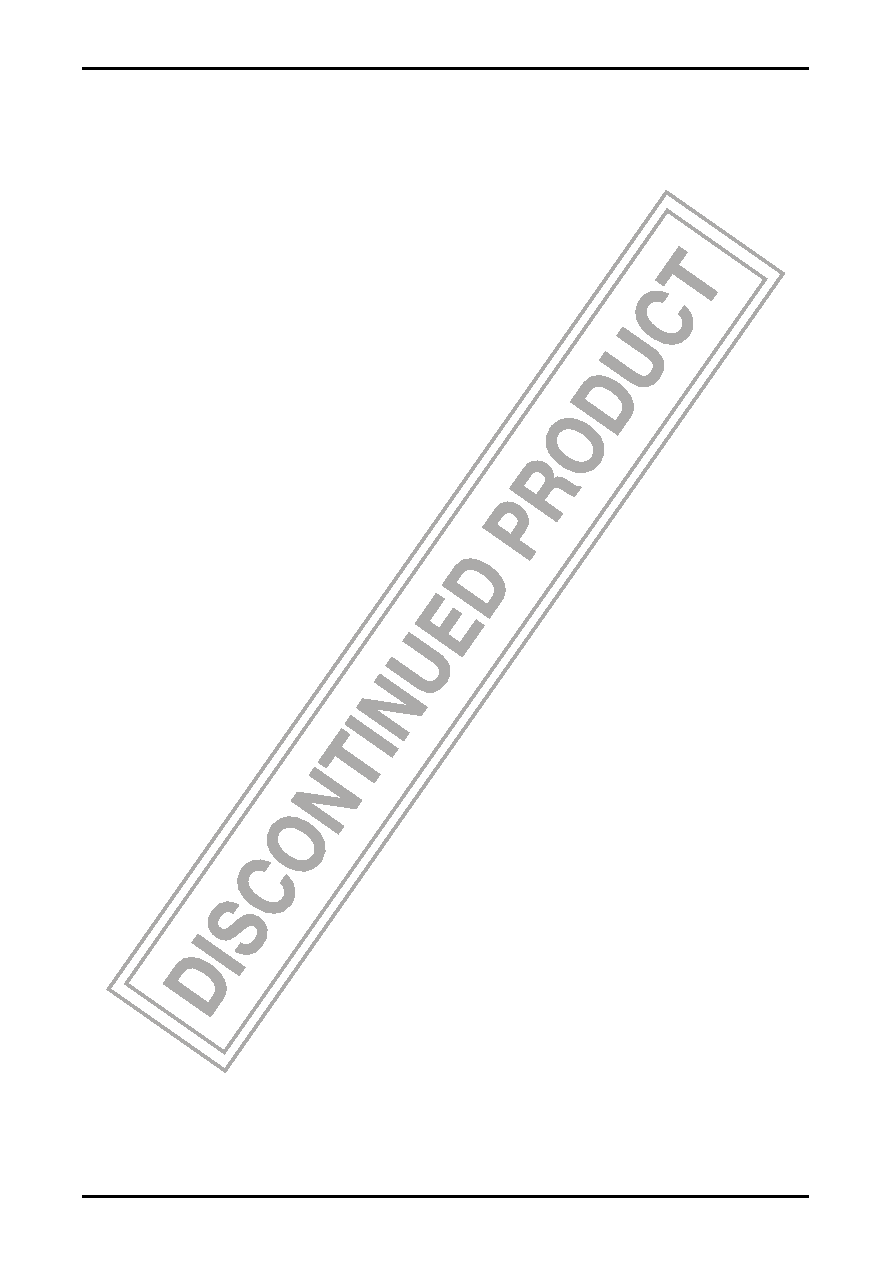- 您現在的位置:買賣IC網 > PDF目錄30716 > LA4145 0.9 W, 2 CHANNEL, AUDIO AMPLIFIER, SIP9 PDF資料下載
參數資料
| 型號: | LA4145 |
| 元件分類: | 音頻/視頻放大 |
| 英文描述: | 0.9 W, 2 CHANNEL, AUDIO AMPLIFIER, SIP9 |
| 封裝: | SIP-9 |
| 文件頁數: | 3/6頁 |
| 文件大小: | 103K |
| 代理商: | LA4145 |

LA4145
Νο.1339-3/6
Proper care in changing voltage gain
An external resistor can be connected in series with the feedback capacitor at pin 2 to reduce the voltage gain.
(See RNF-VG characteristic.)
IC usage notes
1. Maximum ratings
If the IC is used in the vicinity of the maximum ratings, even a slight variation in conditions may cause the
maximum ratings to be exceeded, thereby leading to breakdown. Allow an ample margin of variation for supply
voltage, etc. and use the IC in the range where the maximum ratings are not exceeded.
2. Pin-to-Pin short
If power is applied when the space between pins is shorted, breakdown or deterioration may occur. When mounting
the IC on the board or applying power, make sure that the space between pins is not shorted with solder, etc.
3. Radio applications
For use in radio applications, keep a good distance between IC and bar antenna.
4. Printed circuit pattern
When designing the printed circuit pattern, make the power supply, output, and ground lines thicker and shorter and
determine the pattern and parts placement so that no feedback loop is formed between input and output. Place power
capacitor C6, oscillation blocking capacitor C3 as close to the IC pin as possible to prevent oscillation from
occurring. (See the sample printed circuit pattern.)
Description of external parts
C1 (47μF) : Feedback capacitor (NF capacitor).
Low cutoff frequency fL depends on this capacitor.
fL = 90Hz for C1 = 47μF. Decreasing the capacitor value makes the starting time earlier.
C2 (100μF) : Bootstrap capacitor.
C3 (0.15μF) : Oscillation blocking capacitor.
It is recommended to use a polyester film capacitor being good in temperature characteristic, high
frequency characteristic.
C4 (470μF) : Output capacitor.
C5 (47μF) : Decoupling capacitor.
Serves to reject ripple. The starting time depends on this capacitor. Increasing the capacitor value makes
the starting time later.
C6 (470μF) : Power capacitor.
Place as close to the power pin of the IC as possible.
R1 (30kΩ) : Input bias resistor.
Serves to apply input bias. The input impedance almost entirely depends on this resistor value. If a variable
resistor also serves for this purpose, this resistor can be omitted. In this case, it is recommended to use a
resistor of 30k
Ω.
相關PDF資料 |
PDF描述 |
|---|---|
| LA4147 | 0.9 W, 2 CHANNEL, AUDIO AMPLIFIER, SIP9 |
| LA4160 | 2.2 W, 1 CHANNEL, AUDIO AMPLIFIER, PDIP14 |
| LA4165M | SPECIALTY CONSUMER CIRCUIT, PDSO24 |
| LA4166M | SPECIALTY CONSUMER CIRCUIT, PDSO24 |
| LA4167M | SPECIALTY CONSUMER CIRCUIT, PDSO30 |
相關代理商/技術參數 |
參數描述 |
|---|---|
| LA4146 | 制造商:SANYO 制造商全稱:Sanyo Semicon Device 功能描述:2-CHANNEL AF POWER AMP, FOR RADIO, TAPE RECORDER |
| LA4147 | 制造商:SANYO 制造商全稱:Sanyo Semicon Device 功能描述:2-CHANNEL AF POWER AMP, FOR RADIO, TAPE RECORDER |
| LA4160 | 制造商:Panasonic Industrial Company 功能描述:IC |
| LA4162 | 制造商:SANYO 制造商全稱:Sanyo Semicon Device 功能描述:SINGLE-CHIP AF AMPLIFIER |
| LA4165M | 制造商:SANYO 制造商全稱:Sanyo Semicon Device 功能描述:Recording/Playback IC for Micro-Cassette Tape Recorder |
發布緊急采購,3分鐘左右您將得到回復。